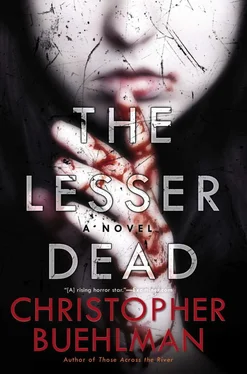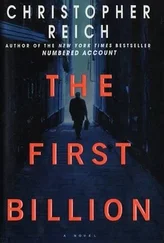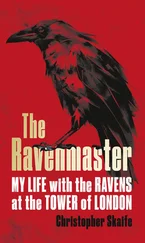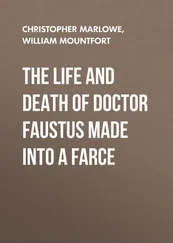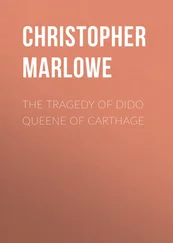You can see that the mortician’s art has made of Joseph a smarter, prettier thing than he was. The other children in this story are real and very much undead, or are as I write these words, even Sammy. His death was a little white lie; a gift to you, the reader, who needed something uplifting in the narrative. It would have been more credible to have the soldier, Old Boy (a formidable warrior despite his youth; he did several of the children great if impermanent harm before succumbing to the charmed mob of commuters), kill him, but you needed something more from your protagonist than he was really able to give. Also, it was Manu who beat him in St. Mark’s Place; he was saved when the van struck Manu. Joseph was no fighter. His one true virtue was loyalty, a virtue I understand well, though my practice of that virtue is, of necessity, selective. He loved his fellows and, in the end, died for them. I think he might have done so knowingly.
I doubt that I would knowingly die for the children, but I certainly take risks on their account. It is difficult to keep them alive, ravenous as their old age makes them (their apple-sized, leaky stomachs, their great, gas-guzzling strength), although I do not imagine they are the only ones to have run such a long race; one suspects the ironically named Countess of Bathory where she lounges in her tub, turning her lovely white limbs (perhaps not so lovely if you startle her) incarnadine; one wonders if Rome’s Mithric cult with its bull’s-blood shower was not a way for one or several to hide in plain sight. But the children, as I have said, require looking after. Certain among us have done so for innumerable years. Do not imagine some secret, cultish brotherhood worshipping them with robes and signet rings, although, come to think of it, Camilla did give me a ring the first year I knew her, a heart-shaped ring of beaten gold that only fits my pinky. Rather, imagine them playing their way through life, picking up strays. Making themselves beloved to more mature, organized individuals, becoming emotionally necessary to those individuals; in many cases, I imagine, taking the place of children left behind in the daylight.
Of course, I can only speak with certainty about myself, and I choose to leave my personal history obscure.
Suffice it to say that I keep them alive because I love them, inas- much as I love. And also because caring for them preserves me. In seeing to their needs I have a sense of purpose where I would otherwise be subject to the grinding mental claustrophobia that kills so many of my tribe. To care for children who are perpetually children makes a mule of me, and mules do not wither away in existential misery. They do not look behind them. Mules pull.
And how does this mule pull?
I arrange the labyrinthine details of travel for creatures that need blood and may not encounter sunlight, whether they go by train, trawler, truck, or yacht. I act as liaison with adults, playing the role of father, teacher, even priest (crosses only harm former believers; I never thought of the wafer as more than bread). Most importantly, I scout the nests of the lesser dead that inevitably drain from a city’s streets to the low places beneath them, the places we covet for their darkness, their privacy, their access to prey.
I infiltrate those nests and earn the trust of the fledglings therein, learning their weaknesses, their strengths, their politics. And, when the time comes, I facilitate their demise. The last time we came to Manhattan—1940, you will easily guess the reason we left Paris—we contented ourselves with killing a few of those we found here, “Chloë” among them, and frightening off the rest. One of these, I am not sure which, returned after we left and scrawled several warnings, notably DON’T TRUST THE CHILDREN. He or she also wrote JOHN IS FALSE, such being my alias at the time, and drew a rather credible image of small, fanged children beheading kneeling, fanged adults. These last two went unnoticed by the group, graffiti artists having largely covered the text (TABBY KAT WUZ HERE) and profaned the mural, predictably affixing self-congratulatory male genitalia on the standing figures, summoning detached phalli to float behind the bottoms of the kneelers, threatening penetrations that will, of course, never occur. No further clemency will be given those who might warn future colonies—our migratory pattern has tightened as the children’s need for blood has grown. The busker known as Billy Bang will be inquired after and, unless he had the good sense to quit the city entirely, found.
This denouement must be terribly disappointing for you, like watching treasured pets dragged off by anonymous coyotes, their carefully selected collars found in heaps of fur, bones, and similar collars. But this is the way of nature. I tried to warn you here and there, but these warnings were admittedly subtle, easy to willfully ignore.
You have known all along that something in this story wasn’t right, that your true narrator was someone other than he claimed to be. Perhaps this knowledge was subconscious. Perhaps, even now, you will feign ignorance, attempt to deny your complicity in the construction of this lie. Even if it strains credibility that a creature as averse to reading as Joseph Hiram Peacock should construct a sentence like the one you are reading now, with its “five-dollar words” and its gentle nod to the subjunctive, let us suppose that some undocumented muse of vocabulary whispered in our simple friend’s ear when he wrote of his “anatomically naïve” fantasies about the colored servant Elise. If you venture to imagine Elise for yourself, try not to confuse her piercing, world-weary eyes with those of Ažbe’s painted Negress where she hangs in her Yugoslavian gallery; such an overlay might suggest an inability in the narrator to truly see those of different races except through the lens of a fellow central European. If you remember that Ažbe was Slovenian, you might begin to suspect Cvetko. But where does suspicion end? If his story about living in Bushwick and fleeing a plague of arson is false, you might begin to doubt everything about him, from the prescription in his ubiquitous glasses to his apparent age to his nationality. Is it possible that an experienced vampire might have learned to manipulate the charm that projects his appearance? Which of Joey’s young, ignorant clan would have been qualified to diagnose a false Slovenian accent, to differentiate it from one fostered in Hungary, Poland, Russia, or (if we wax romantic ) even Romania?
Romania!
Now, that opens up possibilities. If you are an American, with your limited awareness of events outside your own nation and your fawning love of celebrity, perhaps you will go too far, unable to imagine that any Romanian vampire might exist besides a certain count whose story was fabulized by a certain Irishman. Perhaps you will place this count in London at the end of the last century, as in Stoker’s tedious fairy tale, the children under his care tucked away underground as he frolicked with Mina and Lucy. If you go as far as that, you may allow for another unlikely collision with fame: What if the children loved Kensington Gardens as they love Central Park and ran across one J. M. Barrie taking the night air? He was, it seems, ever one to seek out children, particularly those of a haunting or fée nature. Could our little Dark-Ages Peter have been the actual progenitor of Peter Pan? God knows he and his siblings have made enough lost boys in their time; I have kept track of those they mention and my best guess is seventy. Most die the death or fade away after a decade or two. The smart ones flee when it dawns on them that they are tertiary, that they are less the playmates of the Saxons and more servants or huscarls , expected to throw themselves on enemy spears to save Kings Peter and Alfred and especially Queen Aelfgifu (or Camilla, if you prefer her borrowed name).
Читать дальше
